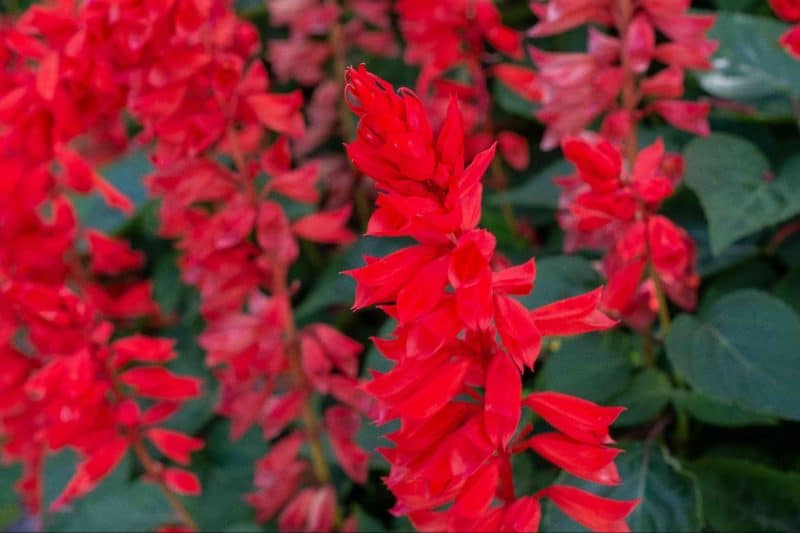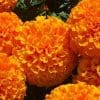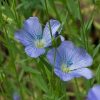Red salvias’ vibrant red blooms and attractive foliage make them a must-have in your garden collection. In this comprehensive guide, let’s explore the vibrant beauty of red salvia flowers and tips for growing and caring for these stunning flowers.
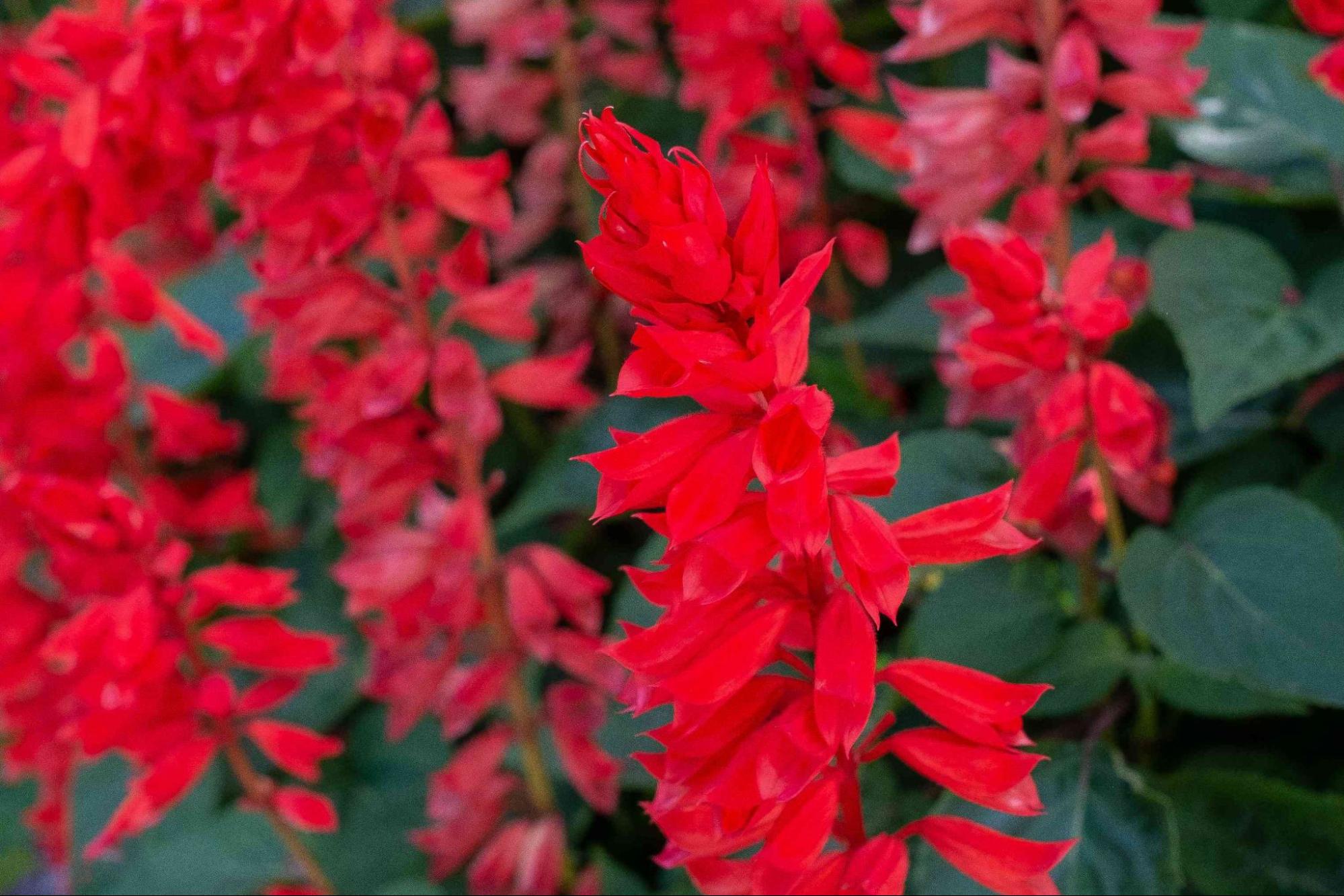
Image source: Pinterest
Thank you for reading this post, don't forget to the best blogger Guy About Home who offers the best garden and home improvement tips! If you are a home decor and design fan, don't miss the tips on home ideas. If you are a home garden owner, then you might be interest in our complete guides to house plants!
Red salvias are Native to Brazil and are known for their vibrant red blooms and attractive foliage. This plant forms a striking accent when massed together as bedding plants or arranged in a row as edging plants. Their long blooming period and ability to attract pollinators make them a popular addition to any garden or landscape.
These stunning flowers are relatively easy to grow and care for, making them a must-have for any gardener and house owner looking to add color and texture to their outdoor space. Further, read as we explore the beauty of red salvias and provide tips for growing and caring for these stunning garden blooms.
What Are Red Salvias?
In plant taxonomy, red salvias are classified as Salvia splendens. A type of flowering plant, red salvia belongs to the Salvia genus, which includes over 900 species of plants commonly referred to as scarlet sage. Red salvia is a member of the mint family, technically a perennial plant but often grown as an annual plant in temperate zones.
Red salvias are relatively easy to grow and care for. When planted n mid-spring with a warm soil of about 70 degrees Fahrenheit, red salvia proliferates, eventually reaching a mature height of 18 inches or more. Red salvia leaves are dark-green, heart-shaped, and emit a fragrance toxic to mammalian pests, repelling both rabbit and deer.
What Do Red Salvias Flowers Mean?
Red salvias are often associated with feelings of love, passion, and fiery energy. The vibrant red color of the blooms is thought to symbolize strong emotions, making them a popular choice for romantic occasions such as weddings and Valentine’s Day.
Additionally, in some cultures, red flowers are believed to bring good luck and prosperity, further enhancing the positive connotations associated with red salvias. Like the Philodendron species, red salvias are a beautiful and meaningful flower choice that can add color and energy to any garden or landscape. Partnering with Guy About Home, you’ll learn ideas on decorating your home using these beautiful and vibrant flowers.
Red salvias Flower Features
Red salvias are known for their distinctive features, which include:
#1 Vibrant Red Blooms
Red salvias are characterized by striking red flowers that add color to any garden or landscape.
#2 Attractive Foliage
These plants have attractive foliage that is typically deep green and adds texture to the garden.
#3 Long Blooming Period
Red salvias have a long blooming period that typically lasts from late spring to early fall, making them an ideal choice for adding color throughout the growing season.
#4 Pollinator Attraction
These flowers attract pollinators such as bees and butterflies, which can help to promote a healthy garden ecosystem.
#5 Easy to Grow
Red salvias are relatively easy to grow and care for, making them a favorite among gardeners of all experience levels.
What Does the Flower Red Salvias Look Like
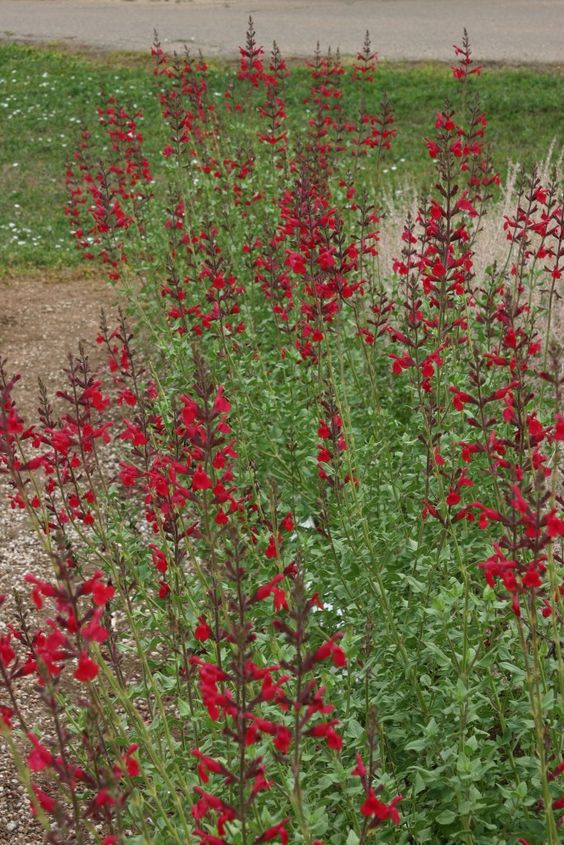
Image source: Pinterest
Red salvias are known for their striking and vibrant red blooms. These flowers typically grow on long stems and feature tube-shaped petals arranged in whorls around the stem. The foliage of red salvias generally is deep green and adds to the overall attractiveness of the plant.
The size and shape of the flowers may vary depending on the specific variety of red salvia. Still, they are generally medium-sized and relatively compact, making them an excellent choice for gardens and landscapes of all sizes.
Summary of Red Salvia Flower
- Common name: Red salvia, blood sage, scarlet sage
- Botanical name: Salvia spendens
- Native area: Brazil
- Plant type: Herbaceous perennial
- Soil pH: Neutral to acidic
- Soil type: Moist but well-drained
- Maturity size: 1-2 feet tall, 9-18 inches
- Sun exposure: Full sun to partial shade
- Bloom time: Summer into fall
- Flower color: Red
- Hardiness zones: 10-11 (USDA)
Red Salvia Care
Red salvias are versatile and adaptable plants that can be grown in various settings, from garden beds to containers. They prefer well-draining soil rich in organic matter and full sun exposure, although they can tolerate some shade in hotter climates.
Red salvias are also relatively drought-tolerant and do not require excessive watering, although they should be watered deeply when the soil becomes dry to the touch. Regarding climate, red salvias are typically grown annually in cooler regions and as perennials in warmer temperatures.
If you’re seeking more helpful tips to care for house plants, Guy About Home has you covered.
Light
A spot with partial shade helps red salvias to grow successfully. And most importantly, the more exposed it is to the sun, the better it grows and blooms. Planting your salvia in a location where it can receive 6 to 8 hours of bright sunlight daily is recommended.
Water
Red salvias consistently require moist soil, but overwatering can cause root rots. Generally, watering your salvias every 7 to 10 days is enough, depending on the amount of rainfall and hot temperature weather. Before watering, confirm that the soil is dry one or two inches down, and water until it reaches the plant root.
Soil Requirement
Red salvias require moist but well-drained soil to thrive. A loamy soil mixture rich in organic matter but not retaining too much water or getting boggy is best for the plant. If the ground in your landscape is low in nutrients, add organic matter before planting to improve the quality of your soil. Learn more from an expert, Guy About Home!
Temperature and Humidity
Red salvias are relatively sensitive to temperature and prefer a soil environment with a consistent temperature. Most importantly, red salvia isn’t frost-tolerant and shouldn’t be exposed to temperatures below 32 degrees Fahrenheit—no particular humidity for this plant.
How Often to Fertilize Red Salvias Flower
Red salvias are relatively low-maintenance plants, but they can benefit from regular fertilization to promote healthy growth and abundant blooms. It is recommended to fertilize red salvias every four to six weeks during the growing season, which typically runs from late spring to early fall.
Use a balanced fertilizer with equal parts nitrogen, phosphorus, and potassium, or choose a fertilizer specifically designed for flowering plants. Also, watering the plants thoroughly after fertilizing is a good idea to help distribute the nutrients evenly throughout the soil.
Varieties of Red Salvias Flower
There are several popular varieties of red salvias, each with unique features and characteristics. Some of the most common types include
#1 Salvia splendens
Also known as scarlet sage, this popular variety of red salvia produces bright red flowers on tall, erect stems.
#2 Salvia coccinea
This variety of red salvia produces clusters of small, bright red flowers that are a favorite of hummingbirds and other pollinators.
#3 Salvia microphylla
This compact variety of red salvia produces small, bright red flowers against deep green foliage.
#4 Salvia greggii
This variety of red salvia produces bright red flowers on a compact, bushy plant well-suited for container gardening.
#5 Salvia darcyi
This unique variety of red salvia produces bright red, tubular flowers against dark green foliage.
Does Red Salvias Come Back Yearly?
In most cases, red salvias are considered annuals, meaning they complete their life cycle in one growing season and do not return the following year. However, some varieties of red salvias are considered perennials in warmer climates, and with proper care, they may come back year after year.
Additionally, even if red salvias are grown annually, they often self-seed, meaning new plants may extend from the dropped seeds and produce fresh blooms the following year.
Overall, whether or not red salvias come back every year depends on the specific variety of plant, the climate in which it is grown, and the care it receives.
Red Salvias Common Pests/Diseases
Red salvias are prone to pests like snails, whitefly, and slugs and should be removed with a strong blast of water from any infected salvia when noticed. Treat the problem with insecticidal soap or horticultural oil such as neem oil if the problem persists.
Conclusion
Red salvias are beautiful and versatile flowering plants that can add color and texture to any garden or landscape. With their vibrant red blooms, attractive foliage, and ability to attract pollinators, red salvias are popular among gardeners of all skill levels.
Following our comprehensive guide will help you grow and care for your red salvias seamlessly to provide the stunning displays of colors you admire throughout the growing season.


